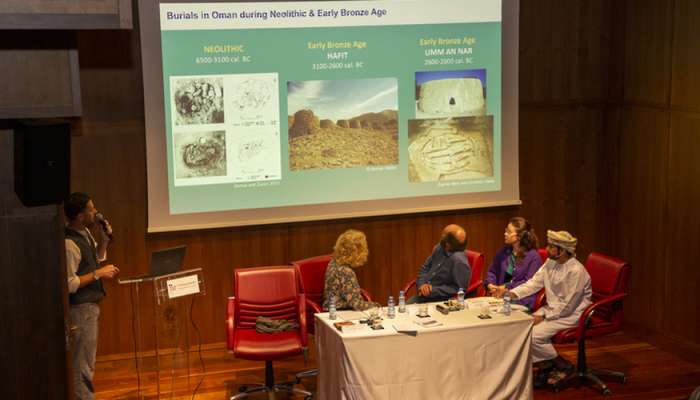
Muscat: The National Museum on Monday hosted a symposium on the latest discoveries of French archaeological missions the Sultanate of Oman.
The symposium is organized by the French Embassy in Oman in conjunction with the Ministry of Heritage and Tourism and the French Center for Research in the Arabian Peninsula.
The symposium highlighted remarkable discoveries of four French researchers in the field of archaeology within the Sultanate of Oman. It also focused on relevant research development and promoted the richness of the Omani archaeological heritage.
Further, the symposium showed that archaeology is essential in promoting cultural tourism in Oman, and raising awareness on the importance of heritage conservation and restoration.
Véronique Aulagnon, French Ambassador to Oman said that historically, France is Oman’s first partner with Italy, encouraging and supporting excavations missions in the country. Their presence dates back to the years 1980’s. Five French archaeological missions are active today in Oman, covering the map of the country from Al Dakhiliyah to Al Sharqiyah coastline and down the Governorate of Dhofar.
The French ambassador commended the fruitful collaboration with the Ministry of Heritage and Tourism and with the local authorities, as well as their work hand in hand to guarantee the preservation of such an ancient heritage and its environment.
Christophe Sévin-Allouet, Director of the mission, presented the latest discoveries on the necropolis of Khor Jarama, located in the Wilayat of Sur, Governorate of South Al Sharqiyah. He brought to light the results of his five years campaign, which led to the discovery of a much probable new prehistoric culture, so far unknown in Oman.
Then, Corinne Castel overviewed the results obtained from the extensive surveying, the excavations and the different studies carried out by the multidisciplinary team of French archaeologists and specialists in the two sites of “Bât” and “Al Arid”, in the Wilayat of Ibri, Governorate of Al Dhahirah.
The French archaeological mission in Central Oman (FAMCO), directed by Mathilde Jean and Martin Sauvage, shared their studies’ results on the settlement of one of the main archaeological areas of the Omani peninsula “Bisya”, in the southern foothills of Al Hajar Mountains, Governorate of Al Dakhiliyah).
The symposium included a panel session that focused on two main topics, namely the importance of conservation and restoration of the Omani heritage in terms of cultural, economic and tourism, in addition to the significance of strengthening bilateral cooperation and supporting archaeological missions.